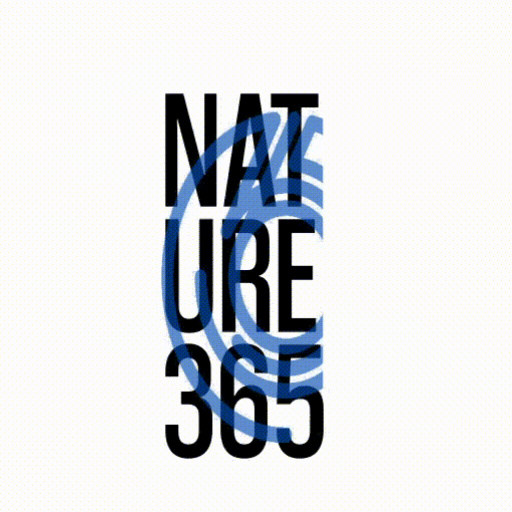Advocating for Sustainable Living | Share your ideas with us
Biomimicry is a conscious emulation of nature’s genius. It’s the act of capturing ideas from nature to solve human challenges and improve technology and design.
It’s a growing discipline that bridges the disciplines of biology and engineering. Using natural systems to create new solutions to human problems, biomimicry is being used by businesses, engineers, and designers around the world.
How Biomimicry Works?
Biomimicry is a design process that draws inspiration from how nature has evolved to solve a specific problem. It’s a natural way for human innovation to happen and it has many benefits for businesses, too.
It’s often used in the design of buildings to help them function more efficiently and sustainably. It can also inspire the development of new materials and technologies.
For example, a self-healing polymer is being developed to make building materials that can heal cracks and holes without the need for expensive repairs or replacements. It’s based on the concept of how plants and animals naturally repair themselves when damaged.
Researchers are constantly looking for solutions to their challenges and they’re turning to nature for inspiration. These engineers are often called “biomimetic designers.”
While biomimicry is often associated with sustainability, it’s also used to help create products that are easier to use and more energy-efficient. It’s also a powerful tool for finding solutions to complex problems, like how to make airplanes fly or how to build the most efficient solar panels.
Research engineers use their knowledge of the sciences to create designs and machinery that help companies solve complicated issues. They conduct research, test theories, and meet with leadership to share their results.
They also may work in other fields, such as health care, construction, and technology. They can be part of a team that conducts biomimetic research or they might be independent and focus on the science behind their projects.
In 1997, scientist and author Janine Benyus popularized the term “biomimicry” as a design process that uses a new, non-industrialized approach to solving environmental challenges. Her book, Biomimicry: Innovation Inspired by Nature, emphasizes a new perspective on the environment and calls for designers to use their work as a tool for creating more sustainable, environmentally friendly products and processes.
As a result, many companies have turned to biomimicry as an important part of their product development process. They often do this to avoid costly mistakes and to take advantage of the ingenuity that has been found in nature.
Examples of Biomimicry
Biomimicry is a problem-solving approach that seeks sustainable solutions by learning from nature’s time-tested designs and strategies. It’s about studying a leaf to invent a better solar cell, studying a termite mound to create an energy-efficient building, and modeling echolocation in bats to design a cane for the visually impaired.
According to the Biomimicry Institute, biomimicry is the process of “replicating, emulating or co-opting natural processes or forms to solve human problems.” It’s based on three principles: Emulate, Ethos, and (Re)Connect, which are the core values of biomimicry.
Using the three principles, the Biomimicry Institute helps researchers, entrepreneurs, and others learn how to design and build products that are inspired by nature. The Institute has a Launchpad program for early-stage companies that help them translate their innovative ideas into viable and profitable products.
The Launchpad program also offers workshops, customer discovery sessions, and technology validation incubators to help businesses make their products work. In addition, the Biomimicry Institute has a network of expert practitioners in fields such as business, health care, design, engineering, and education.
For example, the Biomimicry Institute’s team of experts is helping designers of textiles and clothing create fabrics that mimic the way plants grow and develop in the sun. These fabrics are stronger than their synthetic counterparts and use only reclaimed materials that have already been used in a bio-based production cycle.
A similar strategy is being used in India’s first planned hill city, Lavasa, where developers are planting trees that reflect monsoon rain into the ground to prevent drought. A similar strategy has been used in other parts of the world, such as the Gherkin in London, which has an air ventilation system that’s inspired by sea sponges and anemones.
Another example is in the field of architecture, where architects are creating structures that rely on nature’s inherent sustainability strategies. For example, MIT Media Lab Architect Neri Oxman’s Silk Pavilion uses a robotic frame to produce a covering that spins from thousands of silkworms.
Biologist Janine Benyus, who founded the Biomimicry Institute, says that while biomimicry is a great tool to solve human problems, it should be done in a way that stresses sustainability. That’s why she focuses on what she calls model, measure, and mentor – the basic principles that bind together the science of biomimicry and its practice.
Challenges in Biomimicry
Biomimicry is an innovative approach that seeks to use the strategies and structures of nature to create innovations. These solutions often involve mimicking the processes and characteristics of organisms to develop products and technologies that are both sustainable and practical.
Using the principles of nature to design solutions and inventions can be a challenge, especially in an increasingly competitive world. However, it is also a way to address some of the biggest challenges facing our planet.
One of the greatest challenges that biomimicry faces is the difficulty of putting it into human terms. The field is so vast and the methods that it employs can be complex, so it’s challenging to translate the concepts into a simple way to understand them.
In response to this challenge, the Biomimicry Institute is working to make biomimicry more accessible by creating an easy-to-use online tool that introduces the concept of biomimicry to people from all backgrounds and walks of life. It also offers a community of like-minded nature-inspired innovators and provides resources and events that can help inspire others to incorporate the principles of nature into their work.
Although there are many successful applications of biomimicry in the field, there is still a lot more to do. Biomimicry requires an amalgamation of biological sense and technological data, as well as a large amount of trial and error to learn what works best.
While there are some leading countries in the world where this type of research is being conducted, there are also several other places where biomimicry is not well developed and a lack of government support for it remains an issue. These include developing nations, such as Latin America, where the sector has been in a nascent stage (Table 2).
In contrast, Germany has been at the forefront of biomimicry research and has over 100 public research institutions and two institutional research networks engaged in biomimicry R&D. The German government has invested over 120 million euros in the biomimicry research network since 2001.
Application of Biomimicry
The practice of biomimicry draws inspiration from nature’s incredible innovations to design new products, technologies, and systems. As a field, biomimicry has a diverse array of applications across the spectrum of human endeavors, including medicine, architecture, construction, agriculture, and industry.
While the concept of biomimicry is not new, it’s become increasingly popular and influential in recent years. This subfield of science focuses on learning from nature’s best practices to create sustainable solutions.
Several biomimetic innovations have been cited as solutions to environmental issues such as pollution, energy consumption, and climate change. In particular, designs that emulate biological lessons on form, process, and ecosystem are considered to be more efficient, resilient, and sustainable.
These principles are often incorporated into product design, as a way to reduce the negative impact on the environment, or they can be integrated into engineering to make products more durable and long-lasting. Other applications include reducing the amount of energy used in the manufacturing process by imitating the ways that natural materials break down over time and improving the efficiency of energy-efficient appliances.
Those interested in this field can learn more by enrolling in courses like Design for sustainability, which teaches students how to apply biomimicry and other sustainability techniques to design solutions that are both environmentally friendly and economically feasible. This type of training is a great way to prepare students for 21st-century careers in a growing field that’s both rapidly changing and challenging.
For example, students can work with their instructors to develop a project that mimics a biological innovation to address a real-world challenge. Examples of such projects may include designing a hypodermic needle that uses the serrated proboscis of a mosquito to reduce pain without making it more obvious.
Another biomimetic invention was Velcro, which was inspired by the way thistle burrs stick to animals’ coats and clothing. It’s a key innovation in clothing technology that has also been applied to modern hypodermic needles and running shoes by Nike.
Biomimicry is a growing field that offers a wide range of solutions for sustainable development, according to MIT’s AskNature website. The organization’s biomimetic design framework identifies the best methods for solving many of our most pressing challenges in areas such as renewable energy, waste management, and conservation.
- About the Author
- Latest Posts
A passionate advocate for all natural and sustainable ideas. With a background in sustainable economics science and a deep love for nature, Sojy has dedicated his career to promoting eco-friendly practices and encouraging others to live a more sustainable lifestyle. He is an avid hiker, gardener, and cook, and loves experimenting with natural ingredients in his recipes and lifestyle routines. Sojy believes that small changes can make a big impact and is constantly seeking out new ways to reduce his carbon footprint and inspire others to do the same



